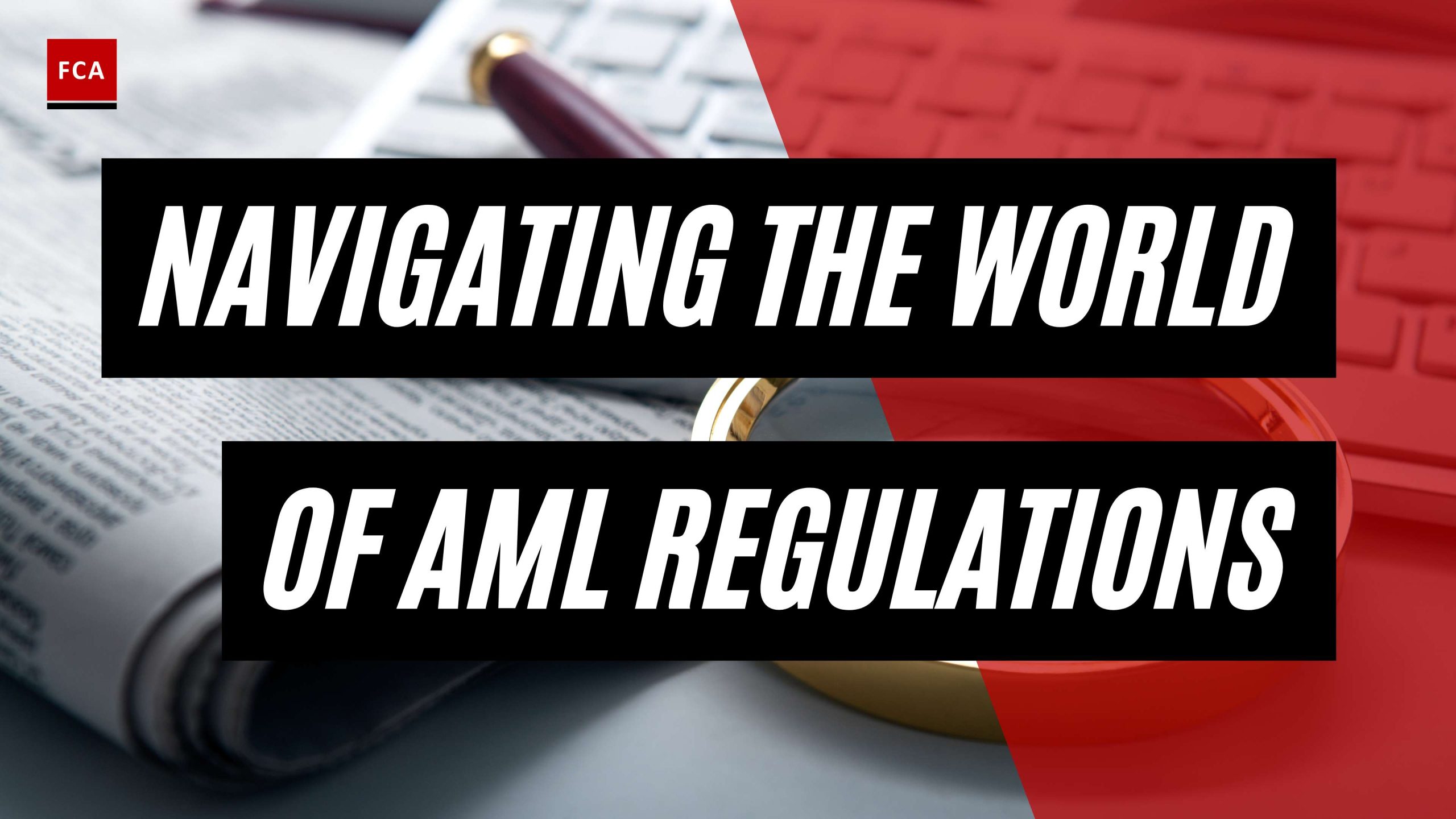Global AML Training Standards
In the world of anti-money laundering (AML), training programs play a vital role in equipping professionals with the knowledge and skills necessary to combat financial crimes. These programs adhere to global AML training standards, emphasizing the importance of education and awareness in the fight against money laundering and other illicit activities.
Importance of AML Training Programs
AML training programs are essential for professionals working in compliance, risk management, anti-money laundering, and anti-financial crime roles. These programs help employees recognize potential money laundering activities, understand their role in preventing money laundering, and identify the process for reporting suspicious activities (Finance Strategists).
By providing comprehensive training, organizations can ensure that their employees are equipped with the necessary tools to detect and prevent money laundering activities. Moreover, AML training programs help educate employees about the laws and regulations governing money laundering, emphasizing the consequences of non-compliance (Finance Strategists).
Components of Effective AML Training Programs
Effective AML training programs encompass various components to ensure comprehensive education and adherence to regulatory requirements. These components include:
-
Risk-Based Approach: AML training should incorporate a risk-based approach, tailoring the content to the specific risks faced by different roles within the organization. For example, employees in customer-facing positions may require additional training on customer due diligence and suspicious activity reporting.
-
Regulatory Knowledge: AML training programs must provide employees with up-to-date information on the laws, regulations, and best practices related to money laundering prevention. This knowledge equips employees to identify and address potential risks within their respective roles.
-
Training Delivery: AML training programs should utilize various delivery methods to cater to different learning styles. This may include in-person training sessions, e-learning modules, workshops, or seminars. Regular training sessions should be conducted to ensure proficiency and reinforce the knowledge acquired.
-
Real-Life Scenarios: Incorporating real-life scenarios and case studies into AML training helps employees understand how money laundering schemes operate and enhances their ability to identify suspicious activities. This practical approach strengthens their skills and enables them to apply their knowledge effectively.
-
Monitoring and Evaluation: Organizations should establish mechanisms to monitor and evaluate the effectiveness of their AML training programs. This may involve assessments, quizzes, or evaluations to gauge the understanding and retention of the training content. Regular reviews help identify areas for improvement and ensure continuous development.
By incorporating these components into their AML training programs, organizations can enhance their ability to combat money laundering activities and comply with regulatory requirements. Properly trained employees contribute to the overall effectiveness of an organization’s AML compliance efforts.
In the next sections, we will explore best practices for AML training, the role of Know Your Customer (KYC) programs, internal practices for AML compliance, and the consequences of inadequate AML training. Stay tuned to learn more about how AML training programs can transform your career and contribute to a safer financial ecosystem.
Best Practices for AML Training
To effectively combat money laundering activities and ensure compliance with regulations, financial institutions must implement robust AML training programs. These programs play a crucial role in equipping employees with the knowledge and skills necessary to identify and prevent money laundering activities. Here are two best practices for AML training:
Targeted Training for Different Roles
AML training programs should be tailored to address the specific responsibilities of different roles within the organization. Employees with more AML-specific responsibilities, such as compliance officers, risk managers, and accountants, require more in-depth training on AML regulations, detection techniques, and reporting procedures. By focusing on the unique requirements of each role, organizations can ensure that employees understand their responsibilities and are equipped to perform their duties effectively.
For example, compliance officers may require training on regulatory requirements and the implementation of AML compliance programs, while accountants may need training on identifying potential money laundering activities through financial transactions. By customizing the training content to the specific needs of each role, organizations can enhance the effectiveness of their AML programs and promote a culture of compliance.
Regular Training Sessions for Proficiency
Regular training sessions are crucial for maintaining proficiency in AML practices and keeping employees up-to-date with the latest trends and techniques associated with money laundering activities. AML regulations and money laundering methods evolve over time, and it is essential for employees to stay informed and adapt to these changes.
Organizations should conduct regular AML training sessions to reinforce knowledge, address emerging risks, and provide updates on regulatory changes. These sessions can include case studies, real-life examples, and interactive exercises to enhance engagement and understanding. By providing ongoing training opportunities, organizations can ensure that employees remain vigilant, knowledgeable, and capable of detecting and reporting suspicious activities.
To streamline the training process and ensure consistency, organizations can leverage technology-driven AML training platforms. These platforms offer automated and customizable training modules, media checks, case management hubs, and integration with Know Your Business (KYB) and Know Your Customer (KYC) processes. They also facilitate global sanction screening and politically exposed person (PEP) list checks, enhancing the identification and prevention of fraudulent activities across multiple regions (Persona).
By implementing targeted training programs and conducting regular training sessions, organizations can enhance their AML capabilities and foster a culture of compliance. A well-trained workforce is better equipped to recognize potential money laundering activities, understand their role in preventing money laundering, and effectively report suspicious activities, thereby safeguarding the integrity of the financial system.
The Role of KYC in AML Training
Implementing a Know Your Customer (KYC) program is a crucial component of AML training programs. Financial institutions are required to establish a KYC program during the customer onboarding process and continuously assess customer risk. The objective of the KYC program is to gather relevant data about customers to ensure compliance with AML regulations and mitigate the risk of money laundering and terrorist financing activities.
Implementing a Know Your Customer Program
A robust KYC program focuses on gathering comprehensive information about customers, enabling financial institutions to understand their customers’ profiles and detect any suspicious activities. During the onboarding process, key components of the KYC program involve collecting data related to the types of products and services used, transaction patterns, geographic location, and the status of high-risk individuals, among other factors (Flagright).
By implementing a KYC program, financial institutions can establish a strong foundation for AML compliance. This program helps ensure that the institution understands who their customers are, their financial activities, and their risk profile. It enables institutions to identify and verify the identity of customers, assess their potential risk level, and establish appropriate risk-based controls.
Continuous Customer Risk Assessment
In addition to the initial onboarding process, continuous customer risk assessment is a critical aspect of the KYC program. Financial institutions must monitor customer transactions and activities to identify any changes in risk profiles or suspicious behaviors. Regularly reassessing customer risk allows institutions to identify potential red flags and take appropriate action to mitigate the risk of money laundering or terrorist financing.
Continuous customer risk assessment involves monitoring transaction patterns, reviewing account activity, and conducting periodic reviews of customer information. This ongoing process helps institutions stay vigilant and promptly detect any unusual or suspicious activities that may indicate potential money laundering or terrorist financing activities.
By implementing a KYC program and conducting continuous customer risk assessments, financial institutions can enhance their AML training efforts and strengthen their overall compliance framework. These proactive measures contribute to a more secure financial system and help protect institutions from potential regulatory penalties and reputational damage.
To ensure compliance with AML regulations and stay up to date with industry best practices, financial professionals must undergo comprehensive AML training programs. These programs cover various topics, including risk assessment, suspicious activity reporting, customer due diligence, regulatory requirements, and emerging trends in financial crimes. By equipping professionals with the necessary knowledge and skills, AML training programs play a crucial role in creating a robust framework for combating money laundering and terrorist financing activities (Financial Crime Academy).
Internal Practices for AML Compliance
To ensure effective anti-money laundering (AML) compliance, financial institutions need to establish and maintain robust internal practices. These practices include implementing systems for detecting and reporting financial crimes, as well as conducting regular reviews and evaluations of internal processes.
Effective Systems for Detecting and Reporting Financial Crimes
Financial institutions must focus on implementing effective systems for detecting and reporting financial crimes. These systems should enable the identification of suspicious activities and potential money laundering risks. By utilizing sophisticated tools and technologies, financial institutions can enhance their ability to monitor transactions and identify red flags.
To ensure compliance with AML regulations, employees should be trained to recognize indicators of suspicious transactions and understand their roles and responsibilities within the AML system. By providing comprehensive AML training for employees, financial institutions can equip their staff with the necessary knowledge to detect and report potential financial crimes.
Furthermore, organizations must adhere to specific reporting requirements, including suspicious transactions, large cash transactions, electronic funds transfers, and more. These reports play a crucial role in maintaining transparency and facilitating potential investigations. Financial institutions should establish processes to capture and maintain records relevant to these reporting requirements, ensuring compliance with regulatory obligations.
Regular Reviews and Evaluation of Internal Practices
Regular reviews and evaluations of internal practices are essential for effective AML compliance. Financial institutions should conduct periodic assessments to evaluate the effectiveness of their AML programs and identify areas for improvement. These assessments can be performed by internal audit departments or external firms to provide an objective assessment of the AML compliance framework.
By reviewing internal practices, financial institutions can identify any gaps or weaknesses in their AML programs. This allows for timely remediation and the implementation of necessary enhancements to ensure ongoing compliance with changing regulations and evolving risks.
Additionally, ongoing training and development opportunities should be provided to employees to ensure they stay up to date with the latest AML regulations and best practices. Regular training sessions and refresher courses can help reinforce knowledge and proficiency in AML compliance.
By prioritizing regular reviews and evaluations of internal practices, financial institutions demonstrate their commitment to maintaining a strong AML compliance program. This proactive approach helps mitigate the risk of facilitating money laundering activities and enhances the overall integrity of the financial system.
In the next section, we will explore the importance of written policies and procedures for AML compliance and their accessibility for key personnel.
Written Policies and Procedures for AML Compliance
As part of a comprehensive Anti-Money Laundering (AML) compliance program, having written policies and procedures is of utmost importance. These policies serve as a guiding framework for financial institutions and help ensure adherence to regulatory requirements and best practices. Let’s explore the significance of written AML policies and the accessibility of these policies for key personnel.
Importance of Written AML Policies
Written AML policies provide a clear and documented set of guidelines that define an organization’s approach to combating money laundering and terrorist financing. These policies outline the procedures, responsibilities, and controls necessary to prevent, detect, and report suspicious activities. By having written policies in place, financial institutions can ensure consistency in their AML efforts and demonstrate their commitment to compliance.
Written AML policies also serve as an essential tool for training employees and educating them about their role in the organization’s AML program. They provide a reference point for employees to understand their obligations, recognize red flags, and take appropriate action. Additionally, these policies can help establish a culture of compliance within the organization, emphasizing the importance of AML measures at all levels.
Accessibility of Policies for Key Personnel
To effectively implement AML policies, it is crucial to make them easily accessible to key personnel who play a critical role in the AML compliance program. This includes individuals such as relationship managers, branch managers, and financial sales representatives. These key personnel need to have a thorough understanding of the policies and procedures relevant to their roles.
By ensuring the accessibility of policies, financial institutions can enhance the effectiveness of their AML training programs and promote consistent compliance across the organization. Key personnel should have easy access to the written policies and procedures through a centralized platform or a designated portal. This accessibility enables them to refer to the policies whenever needed, ensuring that they stay informed and up to date on AML requirements.
To further strengthen AML compliance, organizations may also consider implementing technology solutions that automate and streamline the management and accessibility of AML policies. Such solutions can help ensure that the policies are readily available, easily searchable, and regularly updated as regulatory requirements evolve.
By prioritizing the development of written AML policies and ensuring their accessibility to key personnel, financial institutions can establish a robust foundation for their AML compliance program. These policies act as a roadmap for AML efforts, providing a clear framework for preventing and detecting money laundering activities. Ultimately, they contribute to the overall effectiveness of the organization’s AML training and compliance initiatives.
Compliance with AML Training Regulations
To ensure effective anti-money laundering (AML) practices, organizations must comply with AML training regulations. These regulations set specific requirements for AML training programs, helping professionals in compliance, risk management, and anti-financial crime stay up to date with evolving standards and best practices.
Finra AML Training Requirements
The Financial Industry Regulatory Authority (FINRA) plays a crucial role in regulating the securities industry. As part of their efforts to combat money laundering, FINRA has established AML training requirements for industry professionals, including registered representatives. These requirements are designed to fulfill Continuing Education obligations and enhance professionals’ understanding of AML compliance.
FINRA offers AML training programs and resources through its FinPro platform, enabling registered representatives to view their industry Central Registration Depository (CRD) record and perform other compliance tasks (FINRA AML FAQs). By participating in these training programs, industry professionals can develop the necessary knowledge and skills to identify and report suspicious activities in line with regulatory expectations.
AML Training Programs by Financial Crime Academy
The Financial Crime Academy provides comprehensive AML training programs aimed at ensuring compliance with regulations such as the USA PATRIOT Act and the Bank Secrecy Act. These programs are designed to equip individuals with the knowledge and skills required to effectively combat financial crimes.
The AML training programs offered by the Financial Crime Academy cover various aspects of AML compliance, including risk management, due diligence, and suspicious activity reporting. Through these programs, professionals working in fields such as compliance, risk management, and anti-money laundering can enhance their understanding of AML regulations and learn practical strategies for preventing financial crimes.
By participating in AML training programs, individuals and organizations can stay abreast of the latest AML regulations, industry best practices, and emerging trends. This knowledge equips them with the tools needed to detect and mitigate potential risks, protect their organizations from legal and reputational damage, and contribute to the overall integrity of the financial system.
Compliance with AML training regulations is vital for professionals in the financial industry to fulfill their obligations and effectively combat money laundering. By adhering to these regulations and engaging in relevant AML training programs, individuals can enhance their expertise, contribute to a culture of compliance, and play an active role in safeguarding the integrity of global financial systems.
Consequences of Inadequate AML Training
When it comes to anti-money laundering (AML) compliance, inadequate AML training can have significant consequences for financial institutions and individuals. Understanding the potential penalties and reputational damage associated with ineffective AML training is crucial for organizations and professionals working in compliance, risk management, anti-money laundering, and anti-financial crime.
Penalties and Reputational Damage
Financial organizations that fail to comply with AML regulations can face severe penalties, including both civil and criminal consequences. These penalties can range from substantial fines to imprisonment, depending on the jurisdiction and the severity of the violation. For example, in the United States, the Bank Secrecy Act of 1970 imposes compliance obligations on financial institutions, with penalties that may include fines of up to $500,000, imprisonment for up to 10 years, or both (Unit21). The USA PATRIOT Act introduced measures to target financial crime associated with money laundering and terrorism financing, with penalties including fines of up to $1 million or double the value of the transaction (Unit21). Violations of the Office of Foreign Assets Control (OFAC) sanctions regulations in the United States can result in penalties of up to $20 million and imprisonment of up to 30 years (Unit21).
In addition to monetary penalties, inadequate AML training can lead to significant reputational damage. News of non-compliance or involvement in money laundering activities can erode customer trust and confidence in financial institutions. The loss of reputation can have long-lasting consequences, leading to decreased business opportunities, difficulties in attracting new customers, and potential legal action from affected parties.
The Scale of Money Laundering Activities
The consequences of inadequate AML training are magnified when considering the scale of money laundering activities. Money laundering is a global issue, with an estimated $800 billion to $2 trillion laundered annually worldwide. These illicit funds can be used to finance criminal activities such as drug trafficking, human trafficking, terrorism, corruption, and more. By not effectively addressing money laundering risks through proper AML training, financial institutions inadvertently contribute to the perpetuation of these illegal activities.
To mitigate the risks associated with money laundering, it is crucial for organizations to prioritize comprehensive and up-to-date AML training programs. These programs should provide employees with the knowledge and skills necessary to detect, prevent, and report suspicious activities. By investing in robust AML training, financial institutions can demonstrate their commitment to compliance, protect their reputation, and contribute to the global fight against financial crime.
To ensure compliance and minimize the consequences of inadequate AML training, financial institutions should stay updated with AML training requirements and implement effective AML compliance training programs. These programs should be tailored to different roles within the organization, regularly reviewed and updated to reflect changing regulations, and supported by strong internal practices for detecting and reporting financial crimes. By adopting a proactive approach to AML training, financial institutions can safeguard themselves and the global financial system from the risks associated with money laundering.
The Importance of Updated AML Training
To effectively combat money laundering activities, it is crucial for organizations to prioritize AML training programs that are regularly updated. By keeping up with changing regulations and industry best practices, organizations can ensure compliance and enhance their ability to detect and mitigate financial crimes.
Compliance with Changing Regulations
Money laundering regulations are constantly evolving to address emerging threats and enhance the effectiveness of anti-money laundering measures. AML training programs must reflect these changes in order to keep employees informed and equipped to identify and report suspicious activities.
Regularly updating AML training ensures that employees are aware of the latest trends, techniques, and red flags associated with money laundering activities. This enables them to stay vigilant and take appropriate actions to prevent illicit financial transactions. Additionally, updated training programs provide employees with a comprehensive understanding of the laws and regulations that govern money laundering activities, reducing the risk of non-compliance and associated penalties.
Detecting and Mitigating Financial Crimes
Effective AML training programs play a crucial role in equipping employees with the necessary knowledge and skills to detect and mitigate financial crimes. By staying updated on the latest anti-money laundering practices, employees can enhance their abilities to recognize potential money laundering activities, understand their role in preventing money laundering, and identify the process for reporting suspicious activities.
Regular training sessions provide opportunities for employees to refresh their knowledge, discuss real-life case studies, and share best practices. Through targeted training for different roles within the organization, employees gain specialized knowledge relevant to their responsibilities, enabling them to effectively contribute to the overall AML efforts.
With updated AML training, organizations can establish a culture of compliance and create a strong line of defense against money laundering activities. By empowering their employees with the necessary knowledge and skills, organizations can detect and prevent financial crimes, protect their reputation, and maintain the trust and confidence of stakeholders.
To ensure compliance and mitigate the risk of financial crimes, organizations should prioritize the implementation of effective AML training programs that are regularly updated. By doing so, they demonstrate their commitment to combating money laundering and protecting the integrity of the financial system.








